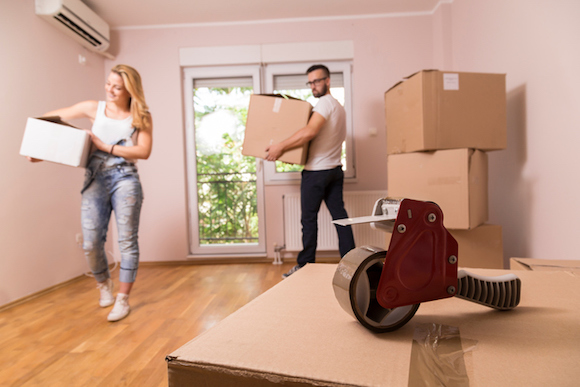If you’re prepping for a long-distance move, you might considering using a storage container such as PODS containers, rather than renting a truck or hiring professional movers.
“Containers are a great choice for flexibility because you can store and move with one solution; load and unload at your own pace; and even store the container on your property for easy access,” notes Riaz Karim, program manager for PODS, who has noticed an uptick in their use.
But convenient as they may be, there are also some tricks to packing storage pods for maximum efficiency and safety. Ready? Set? Let’s pack!
1. “Packing 101” Still Applies.
You might think that a storage container means you can just throw items in, but that’s not the case. You still need to use packing best practices, such as using the right supplies and cushioning items with bubble wrap and moving blankets. You also want to make use of tried-and-true moving boxes, which provide greater protection for your items and make loading the container easier, says Nicholas Boorom, logistics director at estate sale marketplace Everything But the House.
2. Be Methodical When You Load.
Back to the “just throwing stuff in.”—just don’t Packing a container requires a master plan, says Mike Glanz, cofounder & CEO of HireAHelper.
Here are three terms that can help you pack most efficiently and safely.
- “Tiers” are walls of your belongings — vertical layers of furniture and boxes that reach up to the roof of the container, he explains. “A properly loaded container should build a series of tiers, one at a time, using a mix of furniture and boxes all the way through.”
- The “base” is the foundation on which each tier is built. Glanz recommends starting a tier with a base of a stout piece of furniture, such as a well-wrapped and padded dresser, desk or bookcase, flush against the back wall of the container. Then on top, you’ll build your tier with boxes and medium-sized items, topped by your lightest cargo. He notes that the tiers are likely to have a variety of items as their base, such as a big rolling tool chest, a cadre of dense and heavy book boxes, a barbecue grill, etc.
- “Balance” refers to an even distribution of weight within each tier and throughout the load as a whole. It goes without saying that lighter items go on top of heavier items, but you also have to remember that once your container is all loaded up it is going to be moved, he notes. “If the left side of your tier consists of stacks of books and photo albums while the right side is all ceramic figurines and lampshades, there’s a chance those books and photos will start leaning into – then falling onto and crushing – those lighter items.” So, as much as possible, do what you can to maintain a degree of overall balance throughout the container.
3. Fill it Up Completely.
Empty spaces can allow items to shift which can increase the risk of damage, so pack items as tightly as you can, says Boorom, who recommends mixing small items with larger items to fill spaces.
Once your container is packed, tie down all items a section at a time, taking advantage of the conveniently placed eyehooks inside the PODS container, says Boorom.
4. Protect Your Cargo.
If your container will be sitting outside for a while, you’ll want to protect against the elements, such as pests, mold, mildew, etc. Boorom recommends using moisture absorbers, which can be purchased at local home improvement stores, to help prevent mold, mildew and odors. It’s also smart to put items that shouldn’t get wet as far away as possible from the door.
A big wrap of cellophane around each box or item can help keep pests out, and that can also help keep them from being damaged by sunlight if they’ll be stored outside for any length of time. It will also keep boxes from sliding around.
It should go without saying, but we’ll say it anyway. Don’t pack food!
5. Finally, Plan Ahead.
People tend to underestimate how long it really takes to pack up your home and often put it off, says Karim, which can lead to a less-than-efficient packing job. Take advantage of the flexibility of this storage solution and give yourself plenty of lead time to stage items as you can, keeping in mind your tier, base and balance plan.



